For fans of Anthony Bourdain and Andrew Zimmern, Ho Chi Minh City is a familiar place. Both men have recorded numerous episodes for various television series over the years dedicated to the urban alchemy of HCMC. They laud its cuisine, marvel at its energy, and generally wallow in the boulevards and alleyways of Vietnam’s commercial and cultural capital. Obviously, such visions of HCMC oversimplify the city’s (and the nation’s) existence. After all, Vietnam itself is “neither wholly Eastern nor Southeast Asian,” as one scholar of the city argues; it cannot be considered fully socialist or capitalist, and instead it follows the vague government directive of a “market economy with a socialist direction.”[1] It is exactly this kind of in-between space, this navigation of identities, economies and politics beyond binaries that help one to understand this burgeoning Southeast Asian metropolis.
Late nineteenth and early twentieth century European tourists sometimes breathlessly described the city as the “Venice of Asia”; French colonists dubbed it “Little Paris.”[2] Subject to imperial rule throughout their history, the Vietnamese people held tightly to their own identity while absorbing aspects of its occupiers—China, Japan, France and the U.S. HCMC encapsulates this tension; it didn’t officially become designated as Ho Chi Minh City until 1976, but existed as two cities divided by the Saigon River, Saigon in the East and Cholon in the West.
By the late nineteenth century, Saigon represented the efforts of French colonizers intent on communicating to the world the grandeur of its Haussmanesque urban planning, the strength of its empire, and the “rationality of its modern bureaucracy,” notes Annette Mae Kim.[3] Defined by its grid plan, roundabouts, and grand boulevards, Saigon would later be designated the French colonial administrative center in 1931. During colonization much of its population consisted of Western and Vietnamese elites or Vietnamese working for the colonial French government. Unless they worked in the service sector for colonists, Chinese and Vietnamese residents were prohibited from living in French neighborhoods.[4]
HCMC’s Chinese population lived largely in Cholon, while Vietnamese largely resided in areas peripheral to both Saigon and Cholon. Between the late 1700s and mid-1800s, Saigon fell into disuse and sometimes into outright disrepair. At the same time, Cholon experienced steady growth, but did so based on a widespread Southeast China model. “Each community centered around a temple that also housed its association,” Kim points out. “Buildings lined streets that were oriented to access the canals built for transportation and trading …marked by narrow, curved roads toward the river …”[5]

During the 1920s, Vietnamese anticolonialism took root in HCMC. In the interwar period, pro-independence movements and class consciousness gained greater footing among the city’s poor, yet the Vietnamese could not occupy Saigon more fully until the 1954 Geneva Conference.[8]
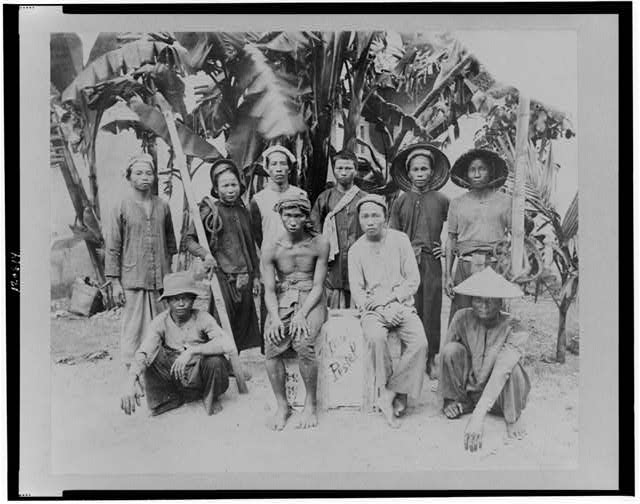
American forces ushered in a thriving urban economy that benefitted some Cholon residents, though some observers bemoaned the changes that had undertaken the city by the late 1960s. “The good old days of Saigon are gone forever. The famous tree lined boulevards of Saigon have been widened to provide maneuvering room for the trucks, jeeps, and Hondas that are crowding out the Cyclos these days,” writer Dick Adair reflected in 1971. The threat of war and air conditioning kept people inside. “Gone is the simple pleasure of sitting quietly and gazing at the passing scene while sipping a refreshing drink,” Adair wrote.[10]
Often missing from accounts are the voices of the Vietnamese. The Vietnam War made a generation of American writers famous: David Halberstam, Neil Sheehan, and Tim O’Brien among others. Ho Chi Minh City often served as their headquarters abroad as they wrote dispatches to Americans back home. Graham Greene’s The Quiet American casts a large shadow, and the many American films made about Vietnam in the 1980s and 1990s arguably eclipses these examples combined. In all these examples, the viewpoint of the Vietnamese is marginal at best. Even urban histories often ignore the majority of Vietnamese residents in HCMC, since many as noted lived just outside Saigon and Cholon, divided between the peripheries of both cities. Still, emigration from HCMC has helped to shape modern American demographics and urban life in places like Orange County, California and Northern Virginia, a topic we will visit this month at the The Metropole.
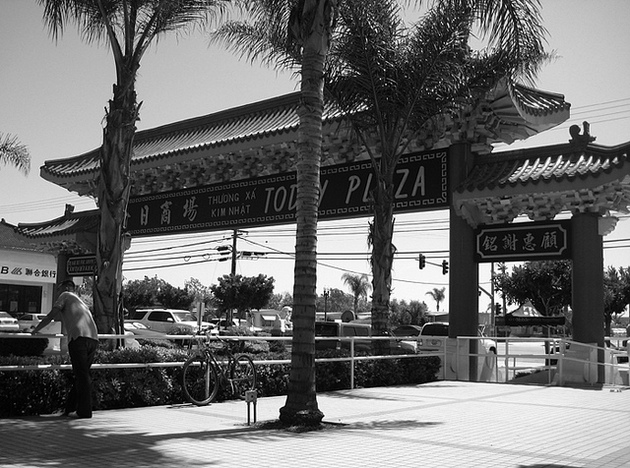
With hostilities ended and a communist government asserting itself across a newly unified Vietnam, HCMC fell into economic isolation. Though long at the center of international trade routes, “Saigon literally vanished form the Southeast Asian mercantile orbit in the space of five years,” notes Eric Tagliacozzo. Hanoi’s ideological dedication to communism shrunk HCMC’s economy such that when Western observers returned to the city many recoiled at the levels to which the standard of living had plummeted. “[P]eople had begun to live on next to nothing,” Tagliacozzo writes.[11]

Yet, do not count Hoc Mon natives out, Harms asserts, for in their social and economic lives they exhibit a certain “social edginess” rather than marginality; they are not simply vessels on the ocean, but active participants. “Sometimes people actively edge their way into opportunities created by their position on the urban fringe,” he suggests, “at other times they are edged out by processes beyond their control.”[13]
In the end, HCMC offers a fascinating, complex insight into modern metropoles. For over two decades urban historians have sought to dissolve the overly simplistic lines dividing the urban, suburban, and rural, and Ho Chi Minh City seems to be doing this not only theory, but in practice. In many ways, it seems to have been doing so for much of its complicated existence.
As per usual, the bibliography we have provided is far from comprehensive and really serves as a means for readers to get their feet wet. We welcome additions to the bibliography in the comments section below. Thanks to Scott Laderman for his help with getting us started on HCMC.

Ho Chi Minh City Bibliography
— Saigon: Mistress of the Mekong, Ed. Anastasia Edwards (Oxford University Press, 2003).
Peter Arnett, Saigon Has Fallen (Rosetta Books, 2015) – Questia review
Jennifer W. Dickey, “Review: Reunification Palace,” The Public Historian 33 no. 2 (Spring 2011): 152-162.
Suhong Chae, “Contemporary Ho Chi Minh City in Numerous Contradictions: Reform Policy, Foreign Capital and the Working Class,” in Wounded Cities: Destruction and Reconstruction in a Globalized World, Ed. Jane Schneider and Ida Susser (Berg, 2003), 227-248 – Questia review
Haydon Leslie Cherry, Down and Out in Saigon: A Social History of the Poor in a Colonial City, 1860-1940. PhD disseration, Yale University, New Haven, 2011.
Michael Dolinski, “Identity Changes of the Chinese Community in Vietnam: A Survey of 20 Families in Cholon,” Asia Pacific Forum 26, (December, 2004): 192-208.
Lisa Drummond, “Street Scenes: Practices of Public and Private Space in Urban Vietnam,” Urban Studies 37.12 (2000): 2377-2391.
Lisa Drummond and Mandy Thomas, Eds. Consuming Urban Culture in Contemporary Vietnam (Routledge Curzon, 2003).
Catherine Earl, “Vietnam’s ‘Informal Public’ Spaces: Belonging and Social Distance in Post-Reform Ho Chi Minh City,” Journal of Vietnamese Studies 5.1 (2010): 86-124.
Donald B. Freeman, “Doi Moi Policy and the Small Enterprise Boom in Ho Chi Minh City, Vietnam,” Geographical Review 86.2 (1996): 178-197.
Martin Gainsborough, Changing Political Economy of Vietnam: The Case of Ho Chi Minh City (Routledge, 2003).
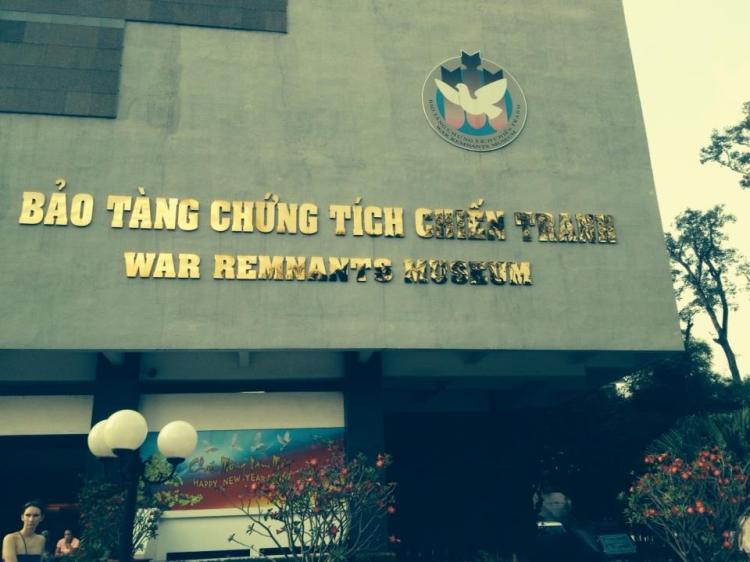
Jamie Gillen, “Tourism and Nation Building at the War Remnants Museum in Ho Chi Minh City, Vietnam,” Annals of the Association of American Geographers 104 no. 6 (2014).
Neil L. Jamieson, Understanding Vietnam (University of California Press, 1993) – very short NYT review
Elena Givental, “Ho Chi Minh City: Contested Public and Private Space in the Vietnamese Metropolis,” Focus on Geography 56 no. 1 (2013): 32-44.
Eric Harms, Saigon’s Edge: On the Margins of Ho Chi Minh City, (University of Minnesota Press, 2011) – Part of JUH review essay
Eric Harms, “The Boss: Conspicuous Invisibility in Ho Chi Minh City,” City and Society 25.2: 195-215.
Gregg Huff and Luis Angeles, “Globalization, Industrialization and Urbanization in Pre-World War II Southeast Asia,” Explorations in Economic History 48 (2011): 20–36.
Du Huynh, “The Misuse of Urban Planning in Ho Chi Minh City,” Habitat International 48 (2015): 11-19.
Annette Mae Kim, Learning to be Capitalists: Entrepreneurs in Vietnam’s Transition Economy (Oxford University Press; 2008) – Economic Development and Change review
Annette Mae Kim, Sidewalk City: Remapping Public Space in Ho Chi Minh City (University of Chicago Press, 2015) – Asian Pacific Studies review (via Project Muse)
Priscilla Koh, “You Can Come Home Again: Narratives of Home and Belonging among Second-Generation Viet Kieu in Vietnam,” Sojourn: Journal o f Social Issues in Southeast Asia 30 no. 1 (2015): 173-214.
Scott Laderman, Tours of Vietnam: War, Travel Guides, and Memory, (Duke University Press, 2008) – Journal of Social Issues in Southeast Asia review (via Project Muse)
Tana Li, “An Alternative Vietnam? The Nguyen Kingdom in the Seventeenth and Eighteenth Centuries,” Journal of Southeast Asian Studies 29.1 (1998): 111 – 121.
Tana Li, Nguyen Cochinchina: Southern Vietnam in the Seventeenth and Eighteenth Centuries (Cornell University Press, 1998) – H-Net review
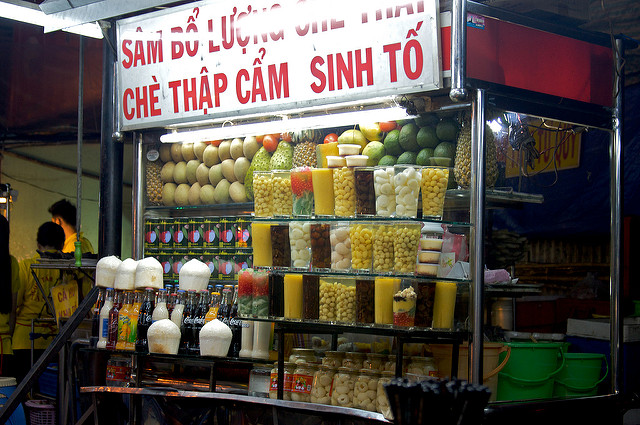
Hy Van Loung, Urbanization, Migration, and Poverty in a Vietnamese Metropolis: Ho Chi Minh City in Comparative Perspectives (Singapore: National University of Singapore Press, 2009) – Journal of Vietnam Studies review (via JSTOR)
A.T. McGee, The Southeast Asian City: A Social Geography of the Primate Cities of Southeast Asia (G. Bell and Sons, 1967).
Kein Nguyen, The Unwanted: A Memoir of Childhood (Back Bay Books, 2002).
Andrew X. Pham, Catfish and Mandala: A Two Wheeled Voyage Through the Landscape and Memory of Vietnam (Picador, 2000) – Very brief NYT times review
Gontran De Poncins, From a Chinese City: In the Heart of Peacetime Vietnam (Trackless Sands Pr. Inc, 1991) – Journal of Southeast Asian Studies review
Srilata Ravi, “Modernity, Imperialism and the Pleasures of Travel: The Continental Hotel in Saigon,” Asian Studies Review 32 no. 4 (2008): 475-490.
Anthony Reid, Southeast Asia in the Age of Commerce, 1450 – 1680 (Yale University Press, 1990) – Journal of Sociology review (via Sage)
Anthony Reid, “The Structure of Cities in Southeast Asia, 15th – 17th Centuries,” Journal of Southeast Asian Studies, 11 (1980): 235 -250.
Jonathan Rigg, Southeast Asia: The Human Landscape of Modernization and Development (Routledge, 1997) – Contemporary Southeast Asia review (via JSTOR)
Eric Tagliacozzo, “An Urban Ocean: Notes on the Historical Evolution of Coastal Cities in Greater Southeast Asia,” Journal of Urban History 33.6 (September 2007): 911- 932.
Phillip Taylor, Fragments of the Present: Searching for Modernity in Vietnam’s South (University of Hawaii Press, 2001).
Nigel Thrift and Dean Forbes, The Price of War: Urbanization in Vietnam: 1954 – 1985 (Allen and Unwin, 1986).
Allison J. Truitt, Dreaming of Money in Ho Chi Minh City (University of Washington Press, 2013) – Popanth review
William S. Turley, “Urban Transformation in South Vietnam,” Pacific Affairs 49.4 (Winter 1976): 607-24.
E.S. Ungar, “The Struggle over the Chinese Community in Vietnam, 1946-1986,” Pacific Affairs, 60.4: 596-614.
Nghia M. Vo, Saigon: A History (McFarland, 2011).
Michael Waibel, “The Production of Urban Space in Vietnam’s Metropolis in the Court of Transition: Internatnalization, Polarization, and Newly Emerging Lifestyles in Vietnamese Society,” Trialog 89.2 (2006): 43-58.
Michael Waibel, Ronald Eckert, Micheal Bose, and Volker Martin, “Housing for Low Income Groups in Ho Chi Minh City: Between Reintegration and Fragmentation,” ASIEN 103 No. April (2007): 59-78.
Johannes Widodo, The Boat and the City: Chinese Diaspora and the Architecture of Southeast Asian Coastal Cities (Marshall Cavendish, 2004).
Michael C. Williams, Vietnam at the Crossroads (Pinter, 1992) – Foreign Affairs review
Gwendolyn Wright, The Politics of Design in French Colonial Urbanism (Chicago: University of Chicago Press, 1991).
Fiction
Graham Greene, The Quiet American (Penguin Books, 2002).
Duong Thu Hong, Paradise of the Blind: A Novel (New York: Harper Collins, 2002) – very short EW review
Ma Van Kang, Against the Flood: Voices from Vietnam (Curbstone Books, 2003).
Bao Ninh, The Sorrow of War: A Novel of North Vietnam (New York: Riverhead Books, 1996) – Independent review
Viet Thanh Nguyen, The Sympathizer: A Novel (Grove Press, 2016) – NYT review
[1] Erik Harms, Saigon’s Edge: On the Margins of Ho Chi Minh City (University of Minnesota Press, 2011), 4.
[2] Eric Tagliacozzo, “An Urban Ocean: Notes on the Historical Evolution of Coastal Cities in Greater Southeast Asia,” Journal of Urban History 33.6 (September 2007): 923; Annette Mae Kim, Sidewalk City: Remapping Public Space in Ho Chi Minh City (University of Chicago Press, 2015), 45.
[3] Annette Mae Kim, Sidewalk City: Remapping Public Space in Ho Chi Minh City (University of Chicago Press, 2015), 38.
[4] Kim, Sidewalk City, 41.
[5] Kim, Sidewalk City, 35.
[6] Tagliacozzo, “An Urban Ocean,” 923.
[7] Tana Li, “An Alternative Vietnam? The Nguyen Kingdom in the Seventeenth and Eighteenth Centuries,” Journal of Southeast Asian Studies 29.1 (1998): 111 – 121; Tana Li, Nguyen Cochinchina: Southern Vietnam in the Seventeenth and Eighteenth Centuries (Cornell University Press, 1998), 59, 119.
[8] Kim, Sidewalk City, 48.
[9] Ibid.
[10] Ibid., 49.
[11] Tagliacozzo, “An Urban Ocean,” 922.
[12] Erik Harms, Saigon’s Edge: On the Margins of Ho Chi Minh City (University of Minnesota Press, 2011), 3.
[13] Harms, Saigon’s Edge, 4.


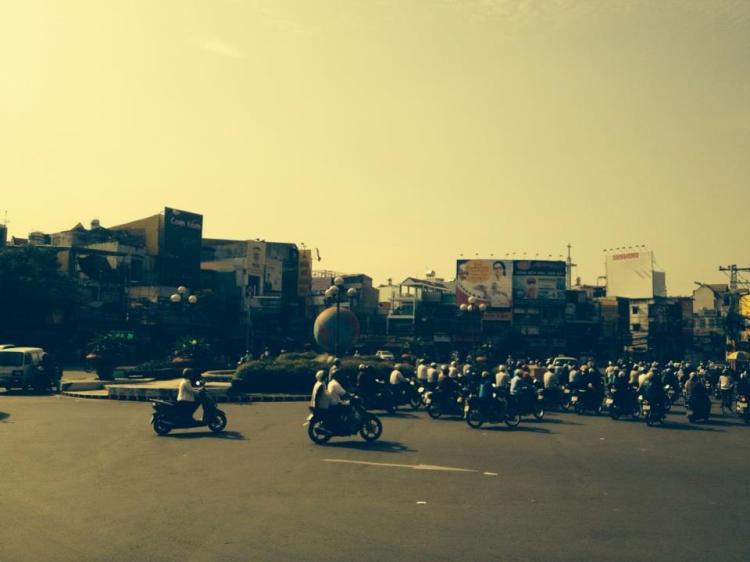
One thought on “Culture, Commerce, and History in Ho Chi Minh City: A Bibliography of Vietnam’s Cultural Capital”